Post by Conner Corbett, Psychology/Interdisciplinary Neuroscience graduate from Portland State University, Clinical Research Assistant at Oregon Health & Science University, PSU Neuroscience Club Alumni Advisor, and recipient of a 2024 NW Noggin Glial Grant.
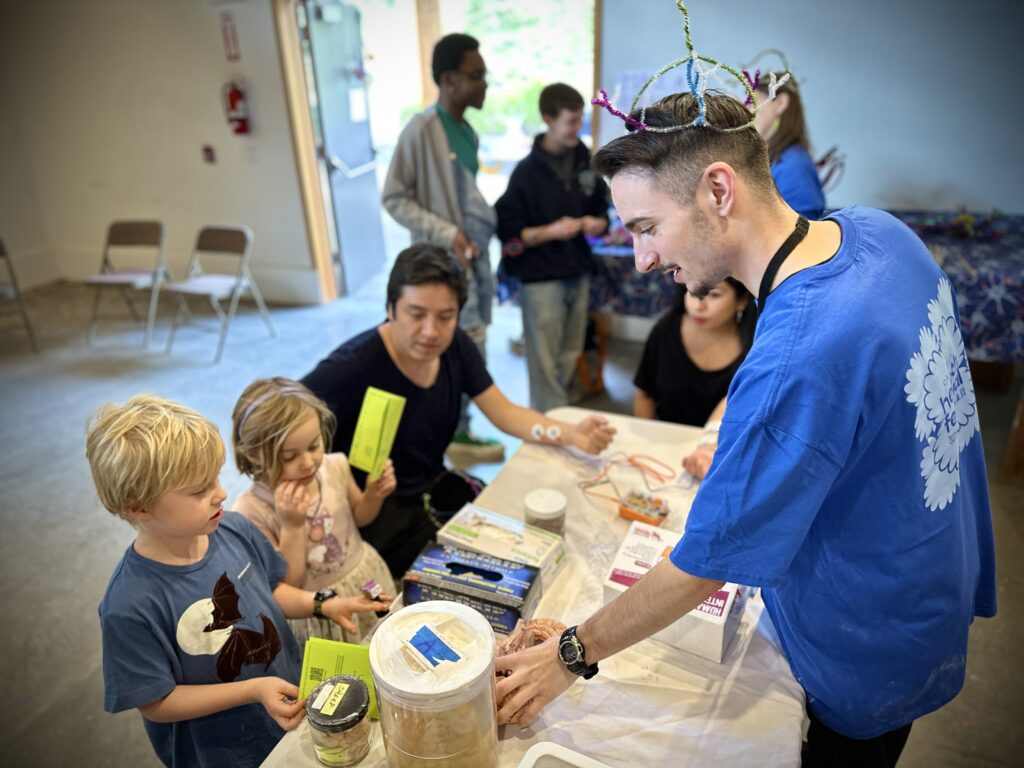
Funding and Politics
Before you go to graduate school, please know this: funding and the university politics that surround it matter. These two key areas often control our academic world.
Where I work I’m seeing lots of cuts in funding for things that truly matter, such as research support, teaching and public outreach where community members and scientists can explore what is being discovered in the lab. It is my strong belief that scientific outreach is not some kind of courtesy from scientists, who receive significant public money – but something we all need to do.
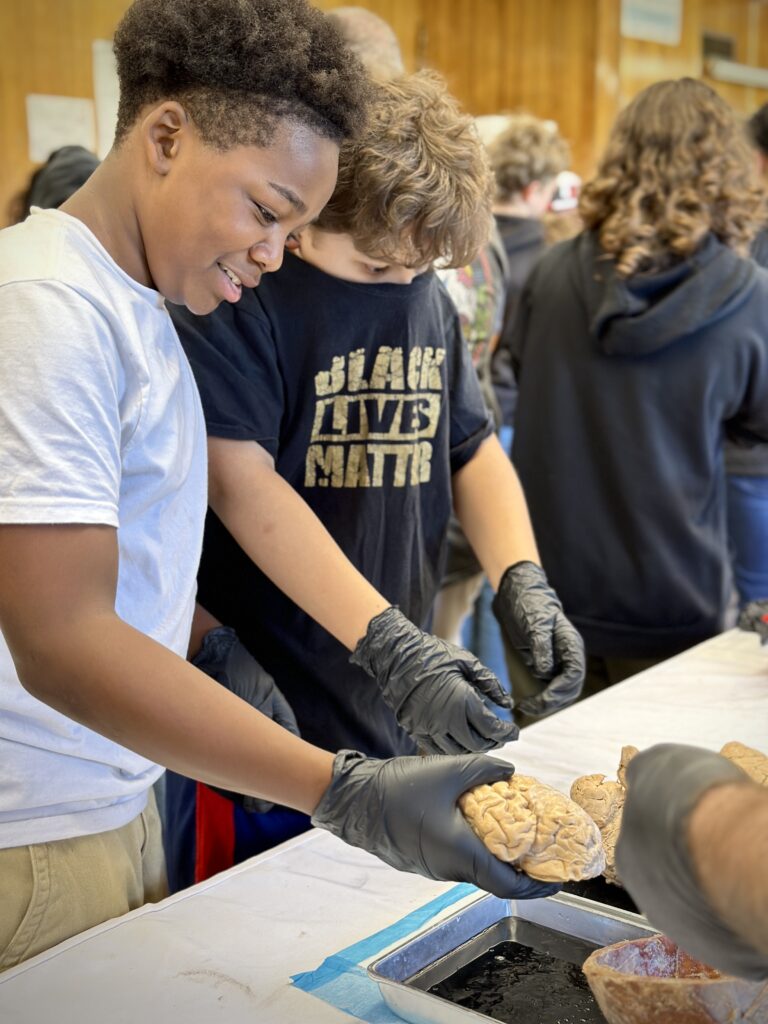
LEARN MORE: OHSU Board Approves Plan to Cut More Than 500 Jobs
LEARN MORE: OHSU Announces Layoff of at Least 500, Weighs Cuts to Benefits
LEARN MORE: Portland State University Faculty Layoffs Spark Outrage
I want to study the brain
The Society for Neuroscience (SfN) is the largest professional association of neuroscientists in the world. I learned about the annual SfN conference, where up to 35,000 researchers and students present and discuss research, during my senior year at PSU. I was taking my first Neurophysiology course and was immediately drawn to exploring the nervous system, the brain and how cellular processes within these biological entities govern our mental well-being.

LEARN MORE: Noggin @ Society for Neuroscience
On the one hand the SfN conference felt like a big exciting event full of opportunity for people in all stages of their neuroscience career. However, on the other hand it seemed extremely inaccessible for a college student like myself with no research experience, and no professional network to reference when applying for membership (Note: the latter is no longer an SfN requirement as of 2024).
Of course the cost of membership fees, and registration fees and travel was also not realistic for a student budget. I decided that if I continued to be interested in neuroscience, perhaps someday I would have a job that might get me into SfN.
I have always been fascinated with the brain [See my previous post about my interests & experience here]. I’m particularly curious about how we can classify and predict behavior of the different neurons in our brain. More recently I’ve studied specific circuitry in the brain and how this works with memory. I am fascinated with memory mechanisms and hope to pursue that area of research in a PhD program.

SfN 2024, Poster #1: Relating cognition to speech perception. Can someone’s information processing rate predict their ability to understand speech in noise? LEARN MORE: The ability to allocate attentional resources to a memory task predicts speech-on-speech masking for older listeners

SfN 2024, Poster #2: Interfering with epigenetic enzymes in the frontal cortex to promote appetitive Pavlovian extinction. LEARN MORE: Facets of Pavlovian and operant extinction; LEARN MORE: Behavioral and neurobiological mechanisms of pavlovian and instrumental extinction learning
LEARN MORE: Curiosity for the Noggin
As an undergraduate at Portland State University (PSU) I put forth every effort to get involved with all the neuroscience networks around me. This included attending PSU Neuroscience Club activities, and volunteering in school outreach events with NW Noggin.
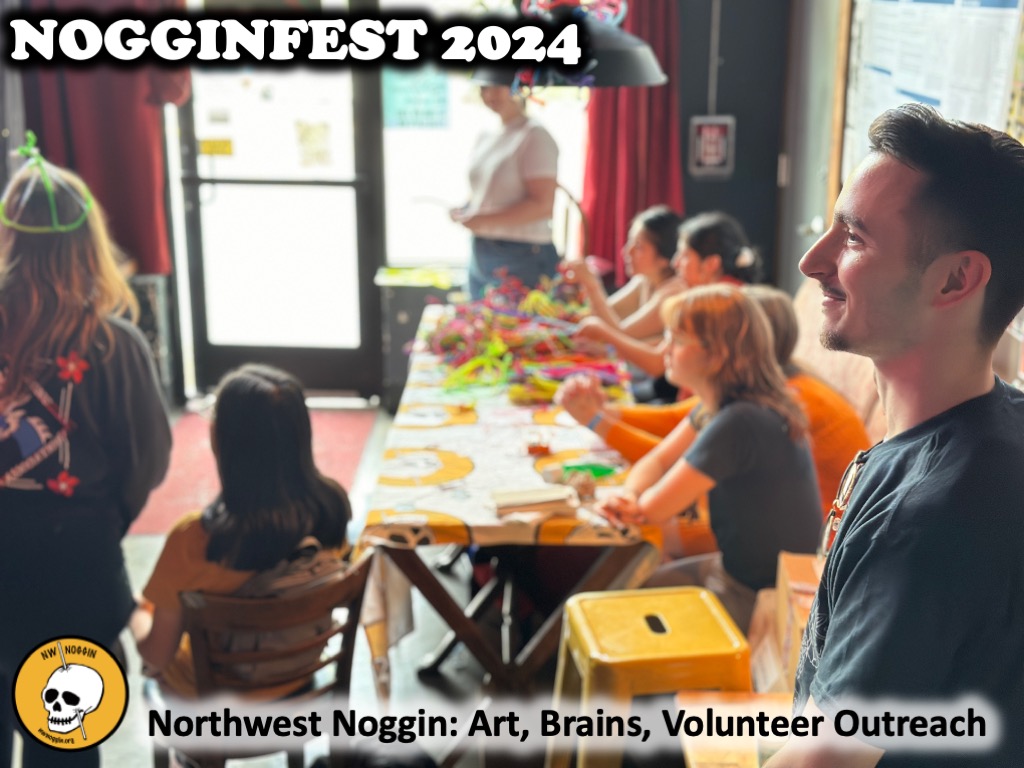
LEARN MORE: What is Northwest Noggin?
LEARN MORE: Noggin Bloggin
In my senior year I volunteered in the Developmental Brain Imaging Lab (DBIL) run by Dr. Bonnie Nagel at OHSU. DBIL pursues multiple long-term longitudinal studies that focus on neurodevelopment and at-risk youth. I also became a McNair scholar and received mentorship in the lab of Dr. Matt Lattal in OHSU’s Behavioral Neuroscience department, and eventually got hired full time in the lab of Dr. Erick Gallun where we study concussions and auditory processing.


2030 Workshop at Google Headquarters in Sydney Australia on 12/1/2023. Our lab was invited to participate and discuss accessible medical technology, including devices to assist with hearing.
LEARN MORE: Behavioral Neuroscience @ OHSU
LEARN MORE: Developmental Brain Imaging Lab @ OHSU
LEARN MORE: About the McNair Scholars Program
These lab experiences have taught me new skills and research methods, and have constantly pushed me outside my comfort zone with public speaking (which is a long time fear of mine).
I’ve grown and found a balance between having confidence in the work I do, while striving to improve and not be afraid of being wrong. When I heard about the possibility of submitting research abstracts for SfN this year, I was excited and almost certain that my institution (OHSU) would support me in presenting my research. There were multiple opportunities within the institution for someone like myself to apply to, including an annual SfN conference travel grant awarded by the OHSU Brain Institute.
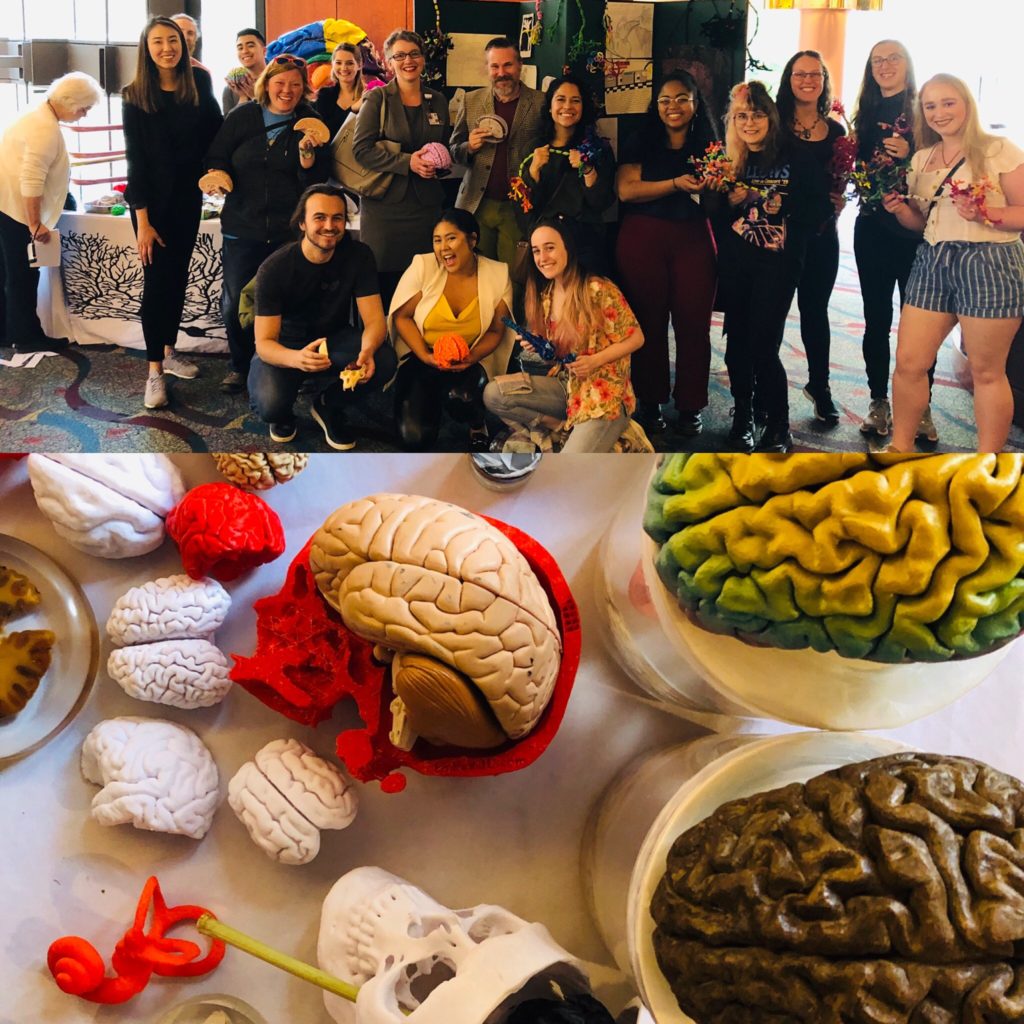
Unfortunately, in summer of 2024, OHSU began making major budget cuts, laying off 500+ working class employees. This included the entire staff of the OHSU Brain Institute, which provided these travel awards and additional public outreach (including Research Week, the annual Brain Fair, and the annual SfN Oregon/SW Washington Chapter meeting)!
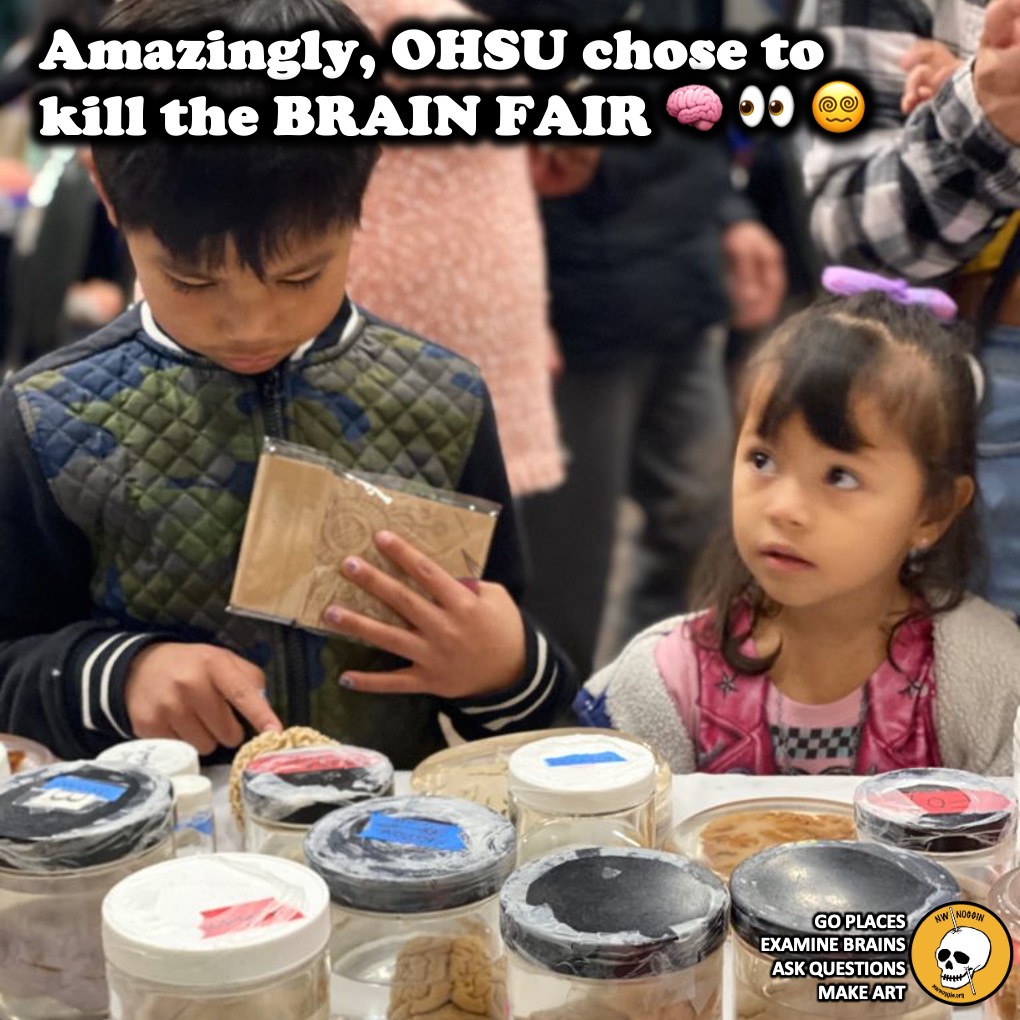
This all came in the wake of an additional $700,000 retirement bonus for Danny Jacobs, the President of OHSU, and a generous $600,000+ severance package for an HR executive, Qiana Williams, who suddenly left OHSU. Additionally, OHSU bought out the Legacy Hospital system.
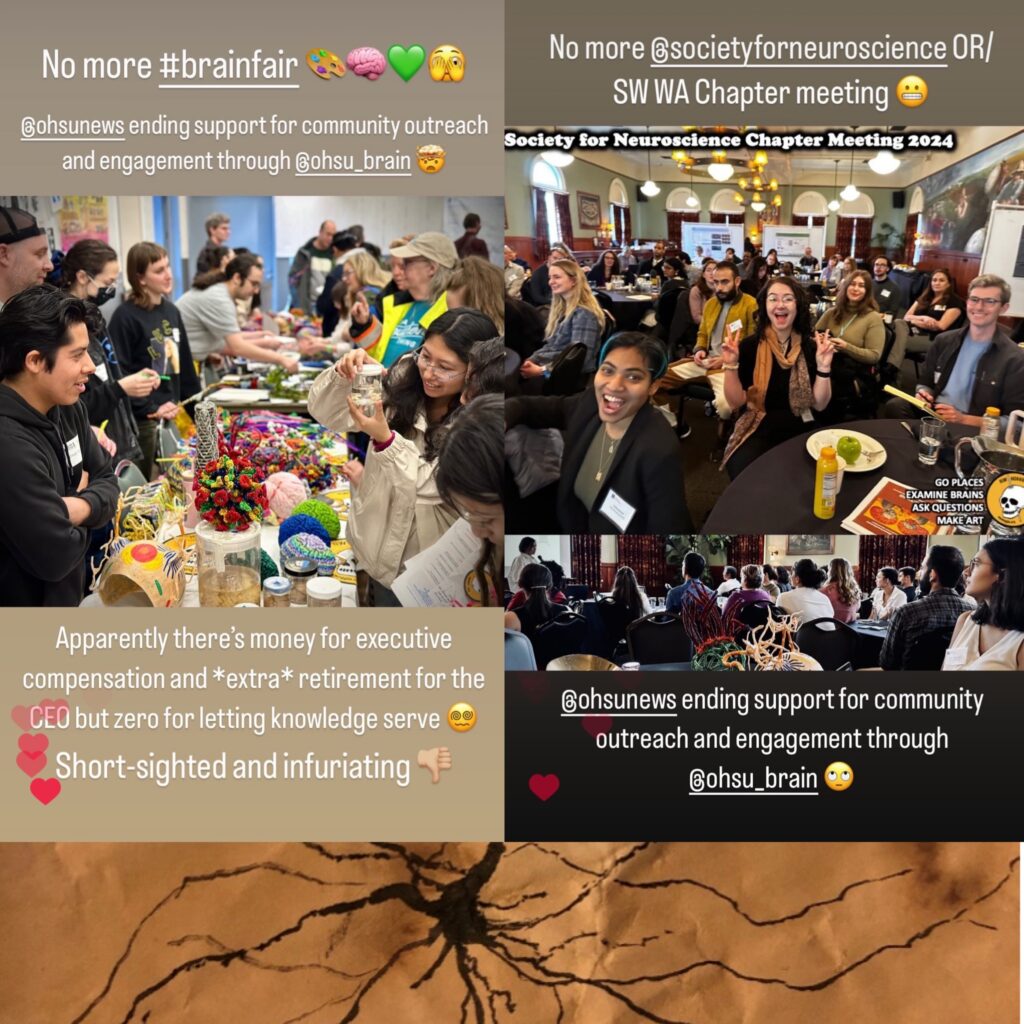
Jacobs just announced that he’s retiring, and taxpayers will largely foot the bill for a gargantuan annual retirement income well beyond what most Oregonians could even imagine receiving.

LEARN MORE: Oregon Health & Science University to lay off hundreds of workers
These experiences have fueled my passion to hold these resource-rich higher ups accountable, and stop them from short-changing research staff, teachers and students. I am now a Member Action Leader (MAT) for the Research Workers United Union at OHSU.
As far as I was concerned, I was suddenly left with two options: 1., to fund my SfN attendance out of my own pocket, or 2. simply not go. Given that I was in the process of applying to PhD programs, presenting at SfN was a great opportunity to network and show how I’ve spent my time since finishing my bachelor’s degree. To my surprise, the PSU Neuroscience Club was also having trouble getting financial support from PSU to attend SfN and present their own posters about their very active club.
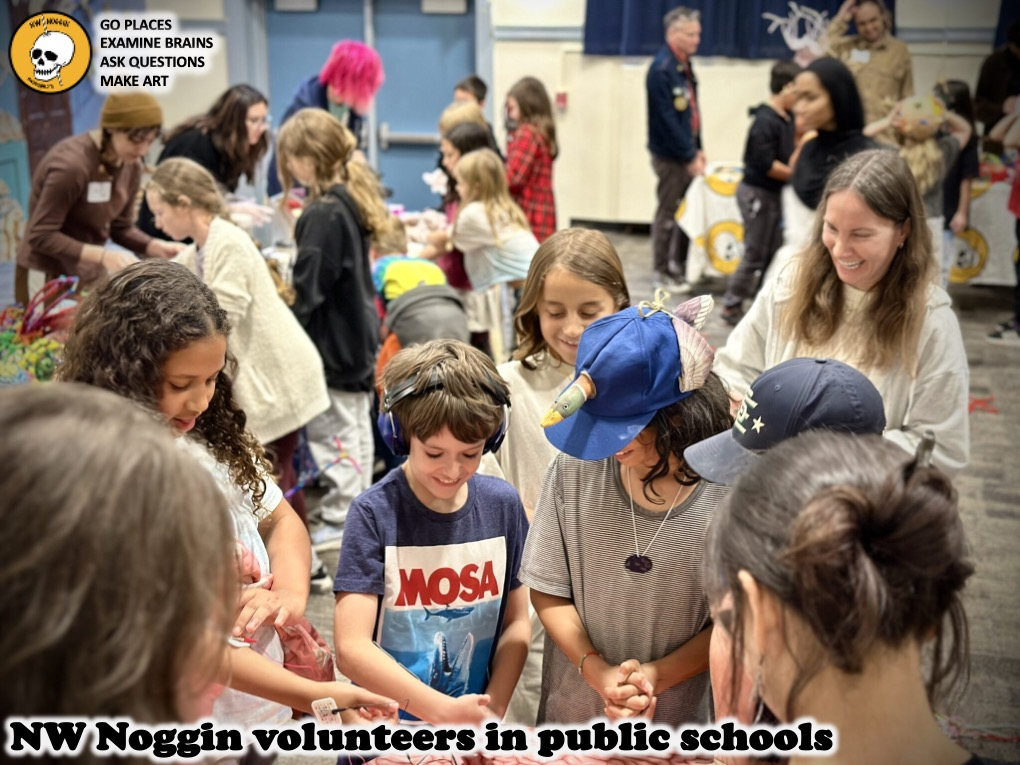
Out of pure kindness, generosity and glial support ( :D) NW Noggin was able to award both myself and the PSU Neuroscience Club essential travel grants. This allowed us to attend, learn, network and present our work to other fellow scientists at SfN, and share our research and conference experiences with students in Chicago Public Schools.
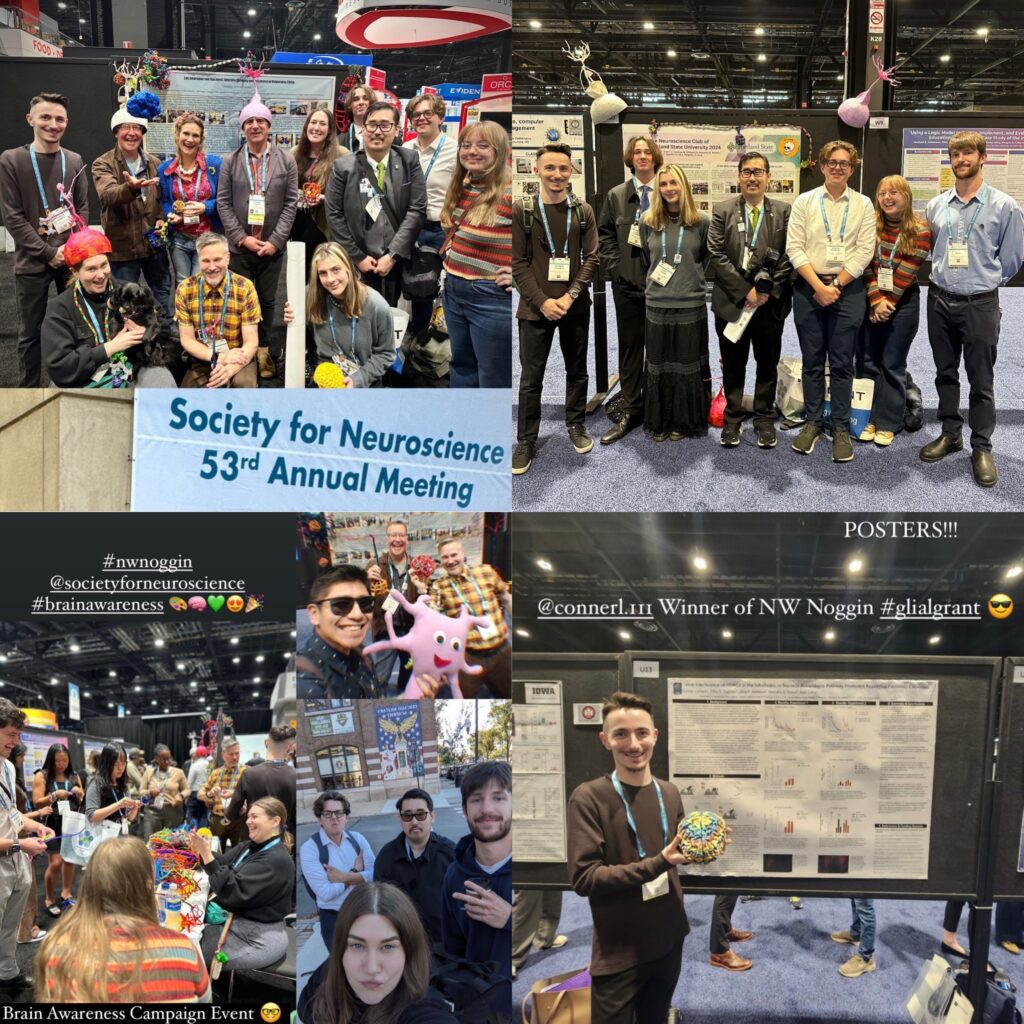
PSU did offer limited support for some undergraduate student flights, and PSU Psychology stepped in at the last minute to fund student housing (though that charge is still currently on the Neuro Club advisor’s own credit card, awaiting promised reimbursement).
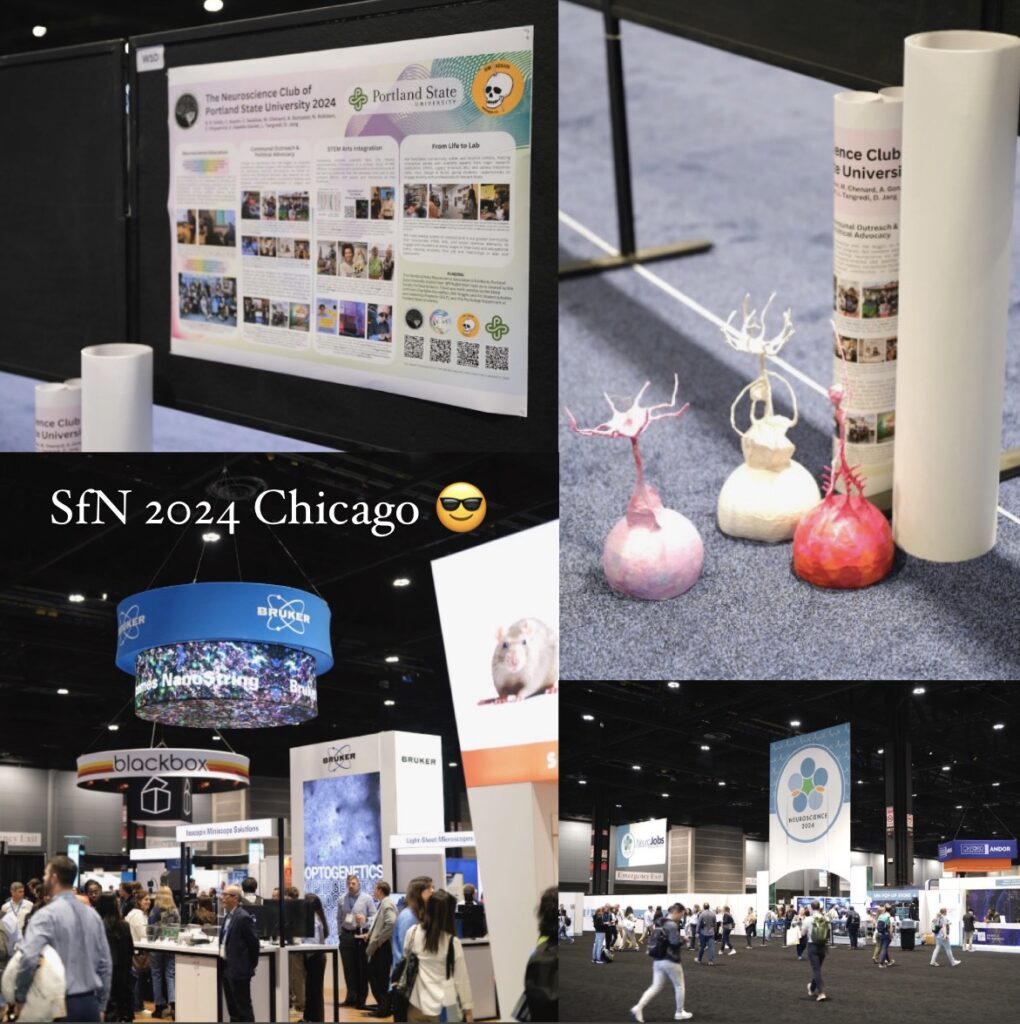
The professional development opportunities at SfN are critical for junior scientists hoping to pursue graduate research (it’s an amazing conference!), and in my opinion it is the tiny, all-volunteer, nonprofit NW Noggin, which annually supports learning for thousands of students, community members and at-risk youth – and not the administration-heavy, resource-rich OHSU or PSU – that genuinely allowed us to contribute and advance this year.
Outreach in Chicago
During our time in Chicago, we were invited to visit the Chicago Public Military Academy.
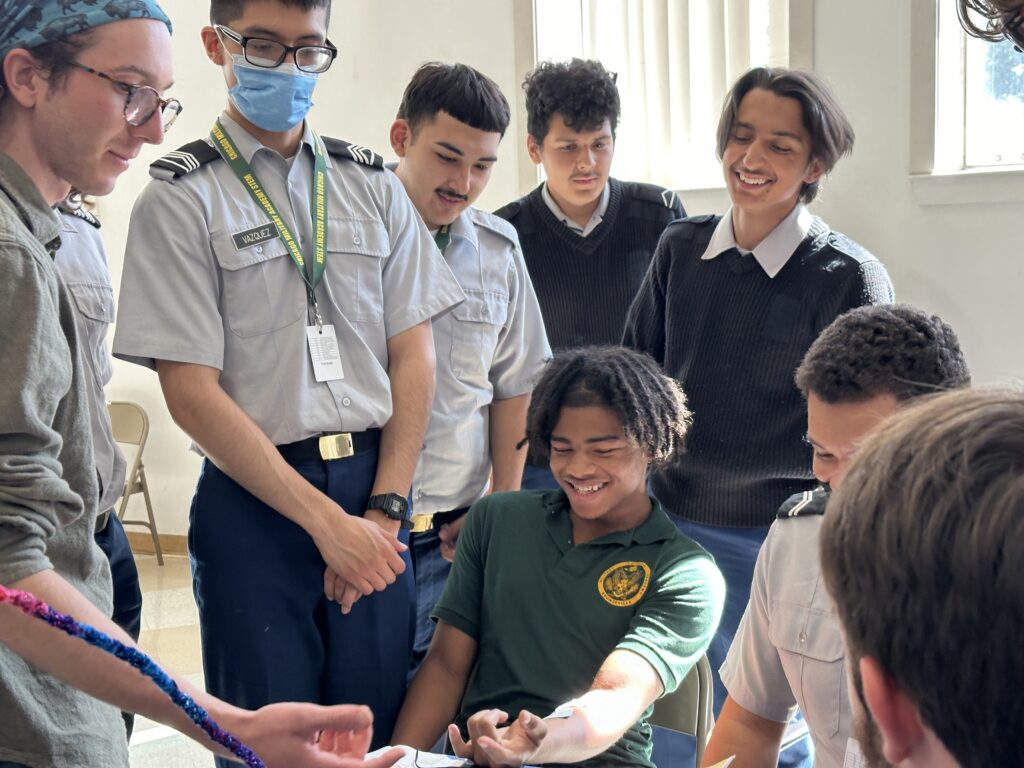
As I mentioned at the beginning of this post, I believe that scientific outreach and public engagement is not a courtesy from scientists, but part of the learning process. The public invests in scientists and scientists really should listen to and share with the public. We wanted to go and engage with the city we were in during the SfN conference by considering questions and interests from K-12 students.

I was really impressed by students at this school.
They gave us a campus tour, described their programs, and introduced us to some compelling historic items on display. Many students are interested in biotechnology and where artificial intelligence (AI) is projected to advance in that area. Luckily, the PSU Neuroscience Club is interdisciplinary and some of our crew majored in computer science and came ready to explore those kinds of questions.

From the school website: “The purpose of the Bronzeville Project is to establish a world-class urban military academy in the historic Eighth Regiment Armory that would serve students from all areas of Chicago. The Academy is the site of National African-American Military Museum, which…display(s) artifacts and memorabilia of the black commanded ‘Fighting Eighth’ Illinois National Guard Regiment and other honorable veterans.”
LEARN MORE: The History of Bronzeville
LEARN MORE: History of Bronzeville
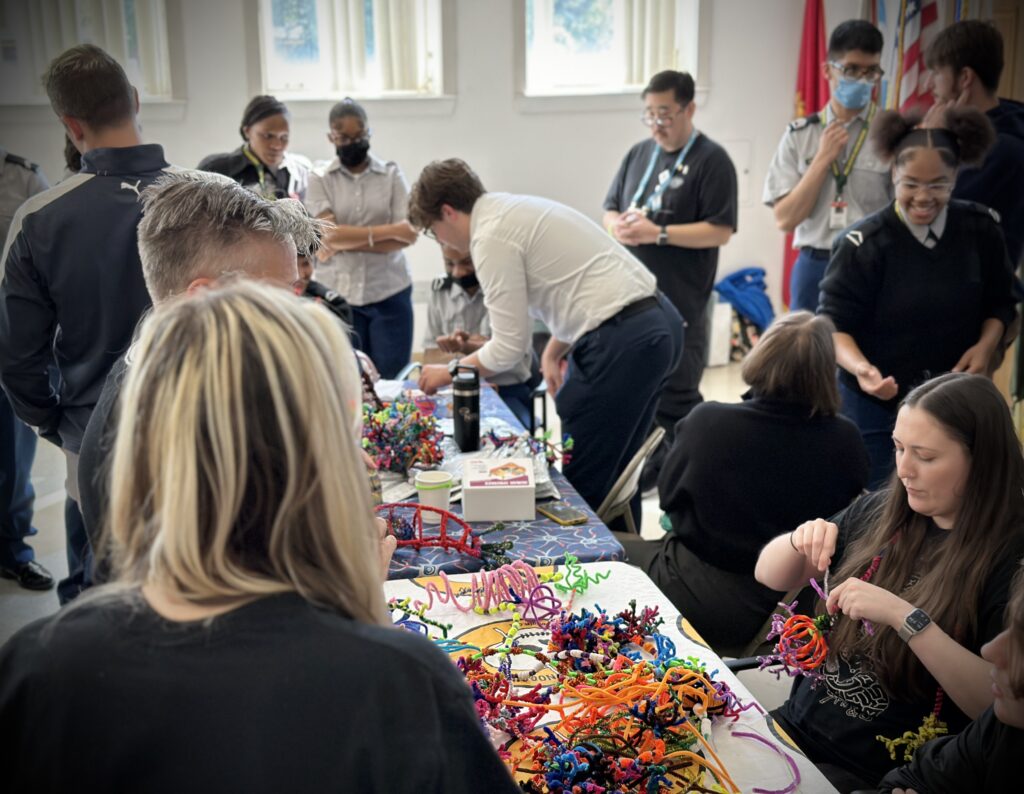
“Thanks for sharing all these wonderful pictures!! The Art+Brain event was more than a pleasure and everyone had a wonderful time. You could tell the students had a wonderful experience and that is what truly matters. It was a pleasure meeting you and your team and please always consider us and our schools for any future events or activities that you may have…”
– Joy Blake, STEM Office, Chicago Public Schools
As Joy demonstrates in her message to NW Noggin, it should be about the students.
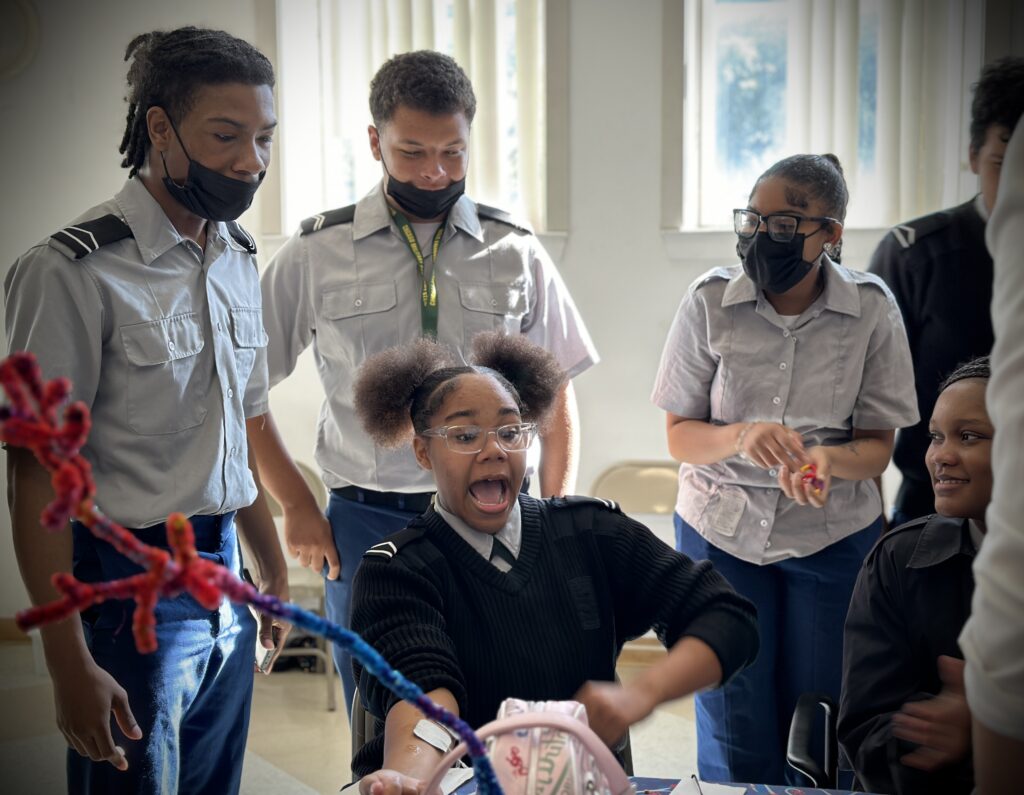
To my mind, NW Noggin is the glial support that has enhanced the education of not just the tens of thousands of K-12 students that met Noggin through outreach, but also the undergraduate and graduate students who get to participate. Noggin (which is ALL volunteer, so no million dollar salaries here) gives students the opportunity to speak about their neuroscience research interests, hear new community perspectives and develop teaching skills in front of an audience.
LEARN MORE: A Brain without Glia
LEARN MORE: What about the glia?
What about the next generation?
Unfortunately, to me, the current trend in higher education seems to be defunding teaching and outreach while allocating more resources into the pockets of higher-ups and executives.
Outreach and teaching are becoming “marketing”; for example, the OHSU Brain Institute now “exists” as social media posts from a centralized “Communications” office. It seems meant to sell a brand – and not expand knowledge through real public engagement, or invite the community and students through popular brain fairs and conferences.

What about the NEXT generation of scientists?
What about the public taxpayers who fund scientific research and would like to learn about current discoveries, but don’t know where to start?
It is not just local universities that are making science less accessible. I learned from an SfN program committee member that attendance at this year’s conference was down about 9,000 people this year. Some SfN officials, she explained, were blaming lower attendance on the beautiful city of Chicago! In contrast, the NW Noggin crew and I attribute this to the money needed to attend the conference.

Right now it costs $165 to submit each abstract for a presentation, $150-$195 for student conference registration and a membership fee (note: these costs are significantly higher for non-students, including faculty), plus a LOT more for travel, lodging, local transport and meals.
Have they thought about lowering the prices?
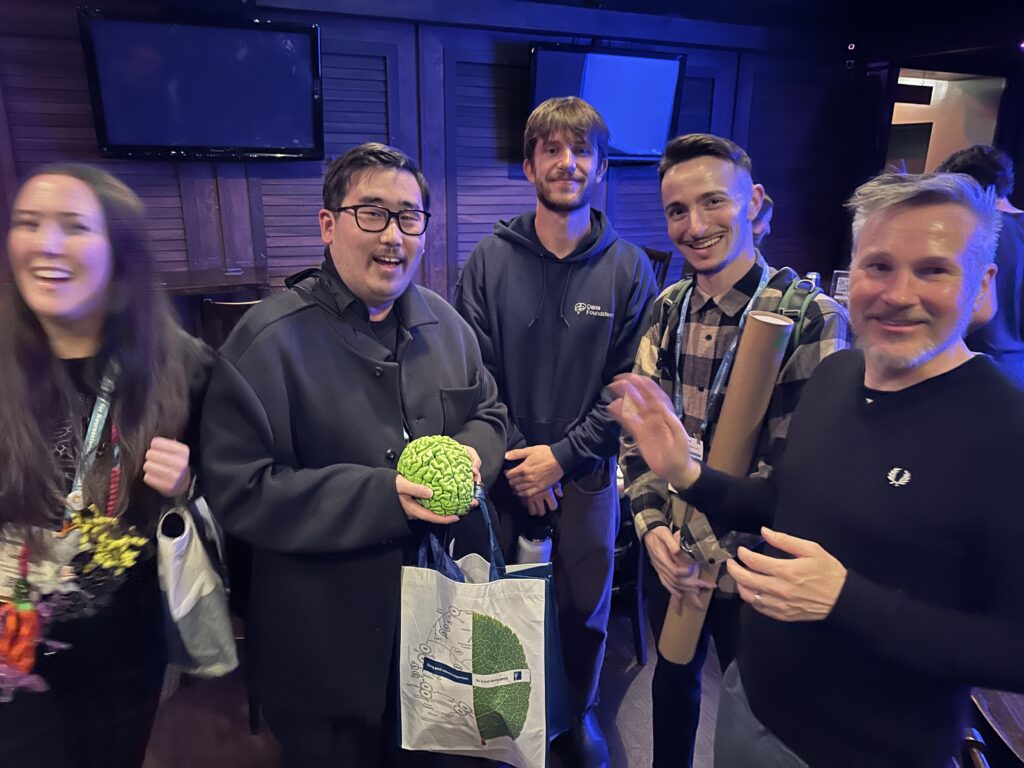
We were shocked to learn that SfN’s Executive Director is paid over $800,000/year!!

Imagine if they earned half that (still an extremely high level of compensation), leaving another $400,000 for investment in new neuroscientists and their research and outreach. That would help grow the conference, and the field!
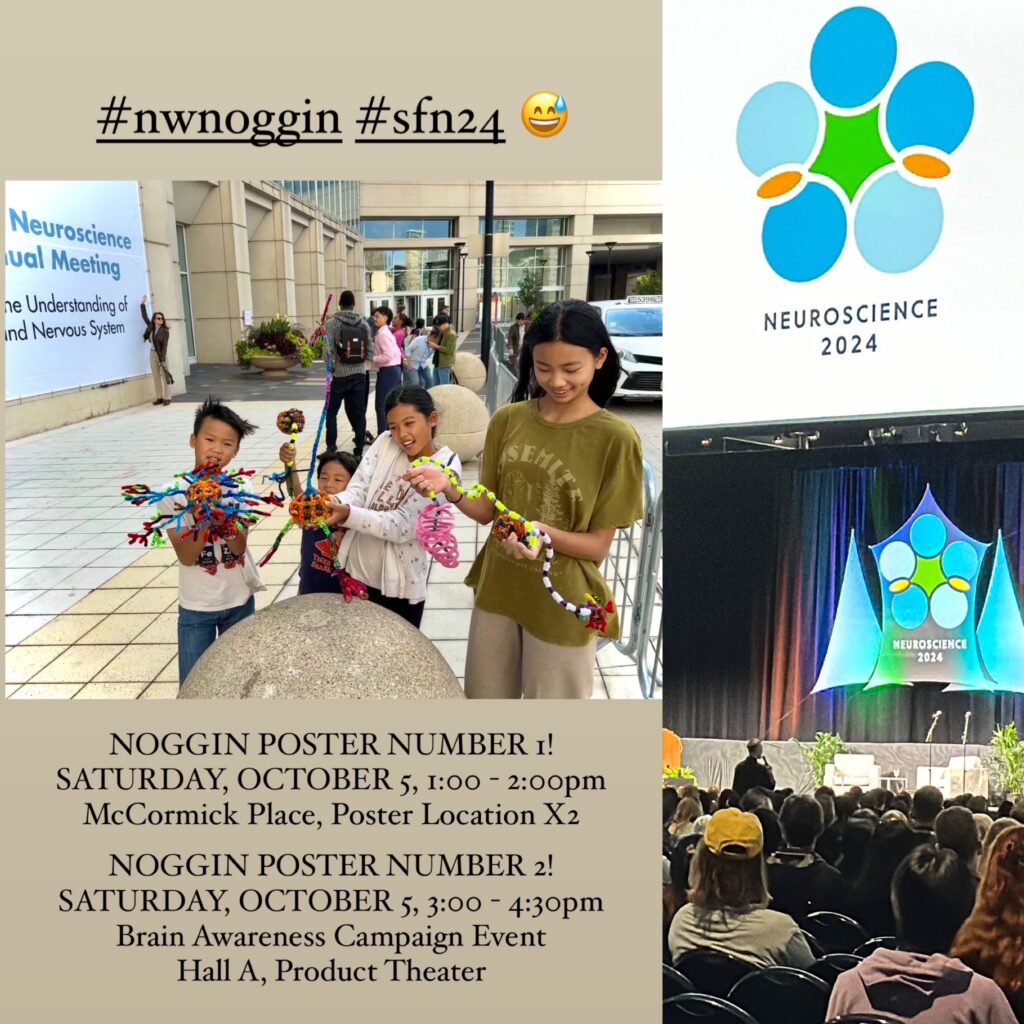
LEARN MORE: Society For Neuroscience (Pro-Publica)
Imagine if retiring OHSU President Danny Jacobs had received a generous $800,000 – half the annual $1.65 million he’s actually enjoyed – and we had another $800,000 available to better train and engage the next generation of scientists and excite and include more of the public around advances in publicly funded brain research?
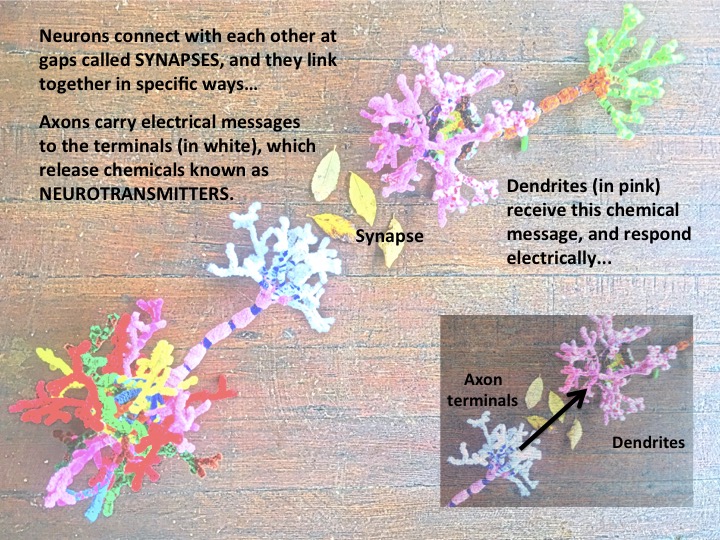
(You could buy 165 MILLION pipe cleaners for what the OHSU Executive Director earns in a year!! Or send more than 1,100 young scientists to eat, sleep and present their research at SfN!)
LEARN MORE: OHSU President Danny Jacobs Resigns After Fraught Tenure, Citing “Personal Reasons”
Looking ahead
SfN attendance is dropping, and so are university enrollments.
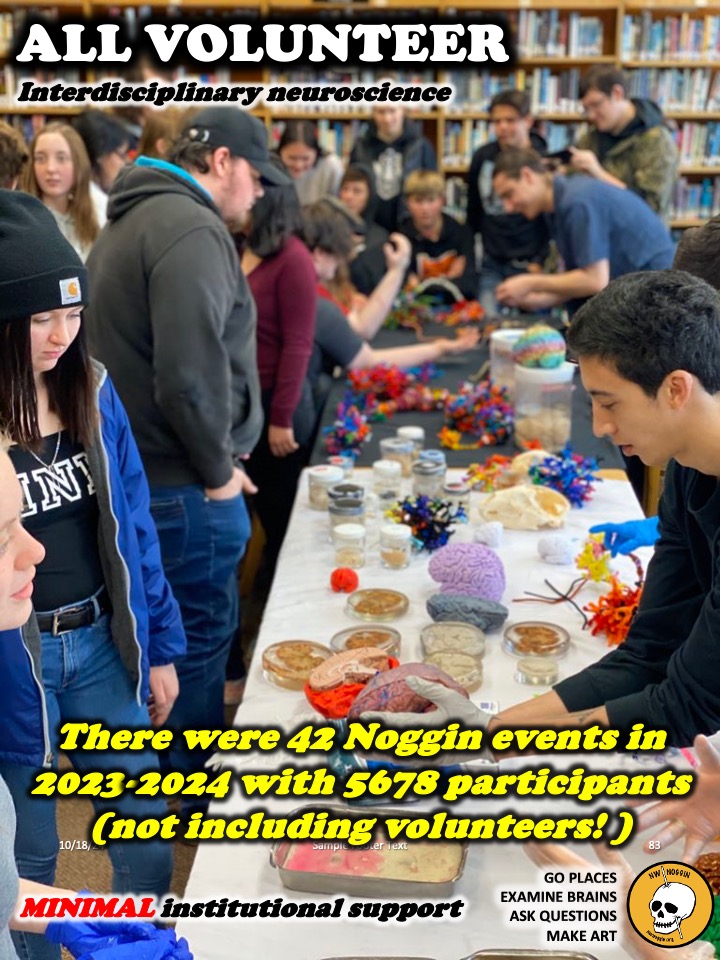
I think that university leaders – along with SfN – should invest more in future scientists by providing them with necessary resources and encouragement to engage with the public, to network, and have continued learning opportunities outside the laboratory. We need support for entities that do things (like the former Brain Institute at OHSU, and NW Noggin) and for teachers who work to make scientific discovery more accessible to us all.
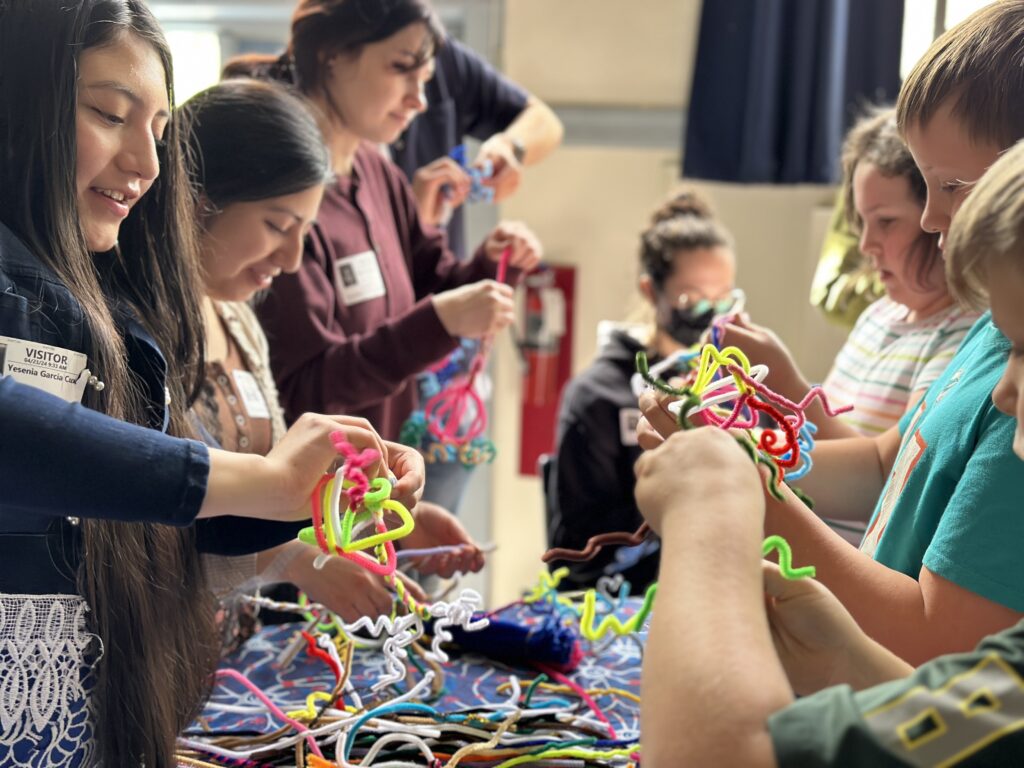
While NW Noggin came to the rescue and provided the glial support for students who were impacted by significant budget cuts this year, should it be the responsibility of an all-volunteer non-profit to carry that burden? I see a LOT more money available at these big institutions.
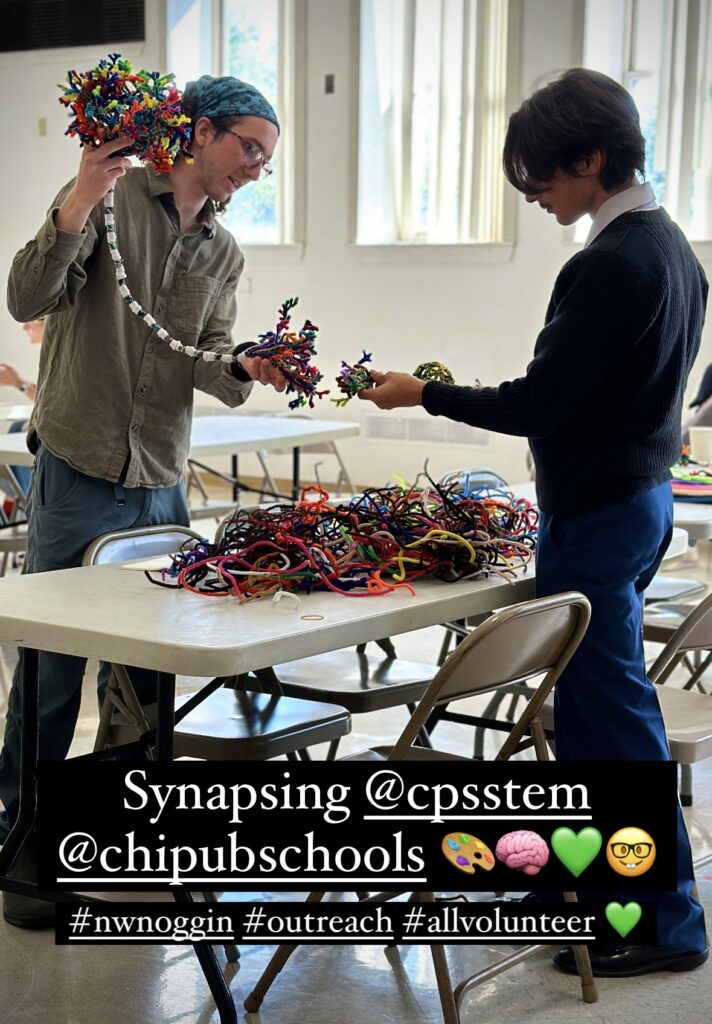
Young scientists need support – so show us the glia!


